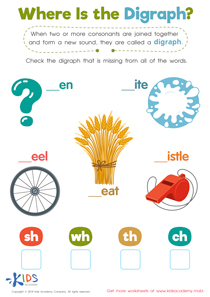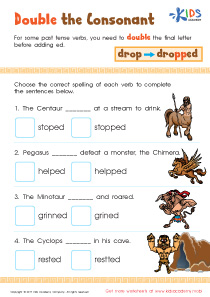Normal Consonant Blends Worksheets for Ages 6-8
6 filtered results
-
From - To
Our Normal Consonant Blends Worksheets for Ages 6-8 are expertly designed to enhance reading skills by focusing on common consonant blends. These engaging activities offer children a fun way to learn and practice blends such as "bl," "st," "tr," and beyond. Each worksheet aims to improve phonemic awareness and boost reading confidence. Tailored for young learners, these exercises foster a strong foundation in literacy, helping kids seamlessly blend sounds for better word recognition and pronunciation. Ideal for both classroom and home practice, our worksheets make learning blends simple and enjoyable. Download today and watch your child flourish!
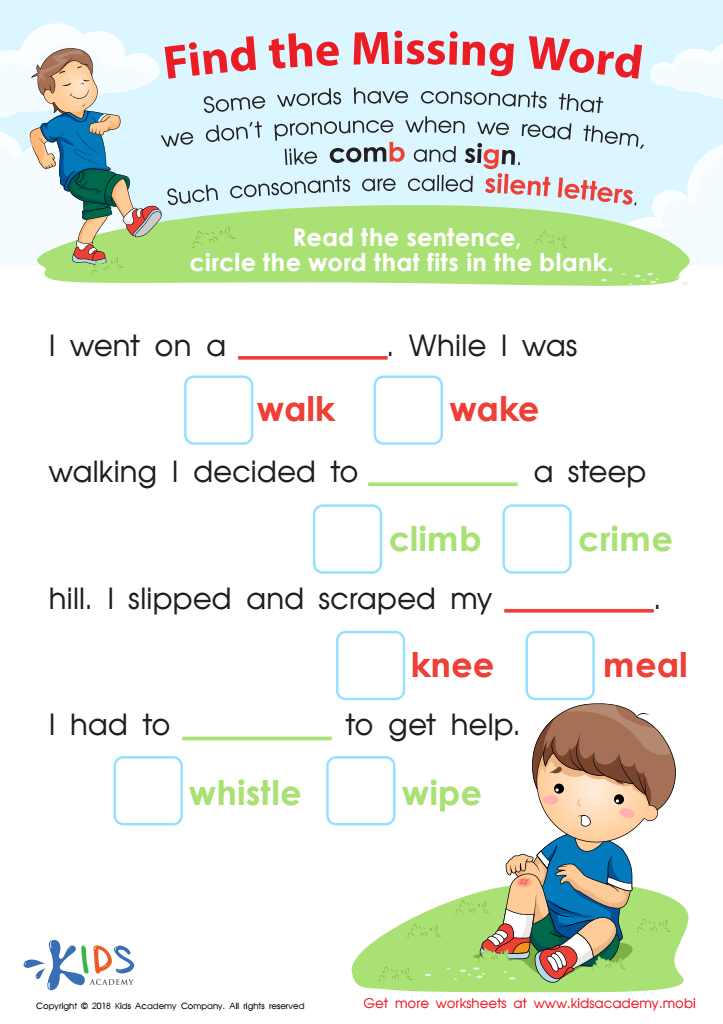

Find The Missing Word Worksheet
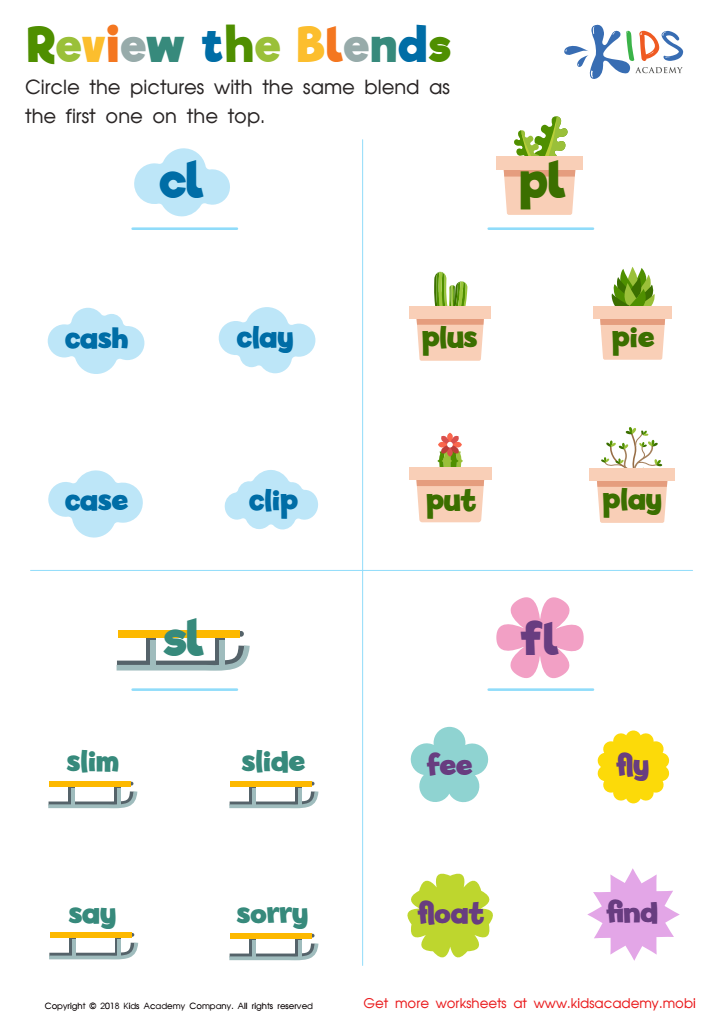

Review the Blends Worksheet
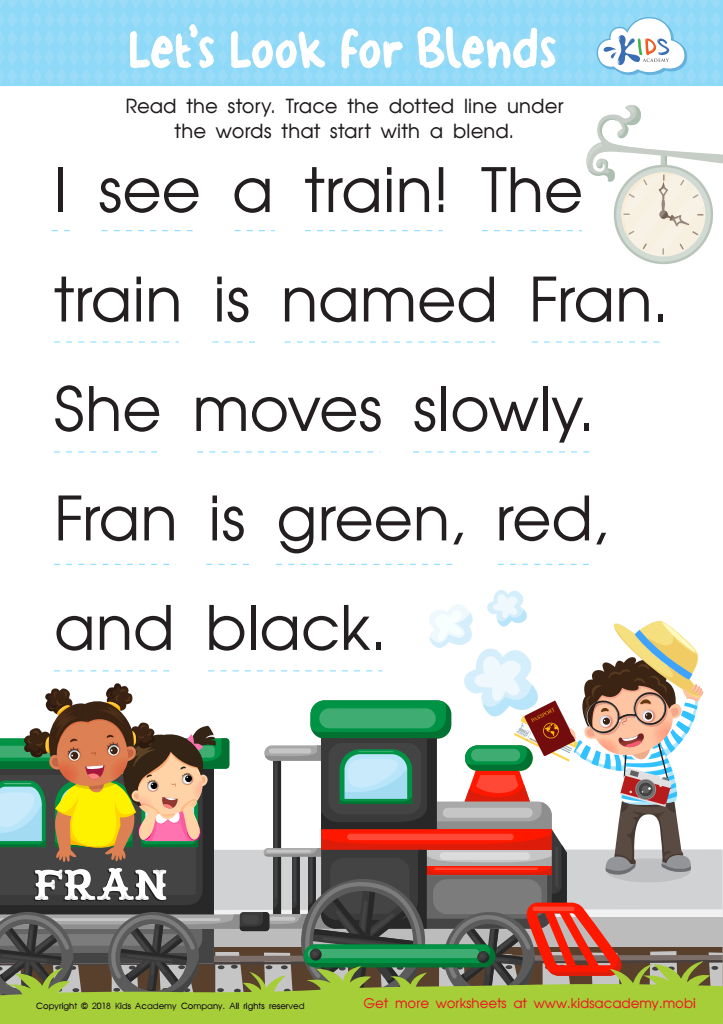

Let's Look for Blends Worksheet
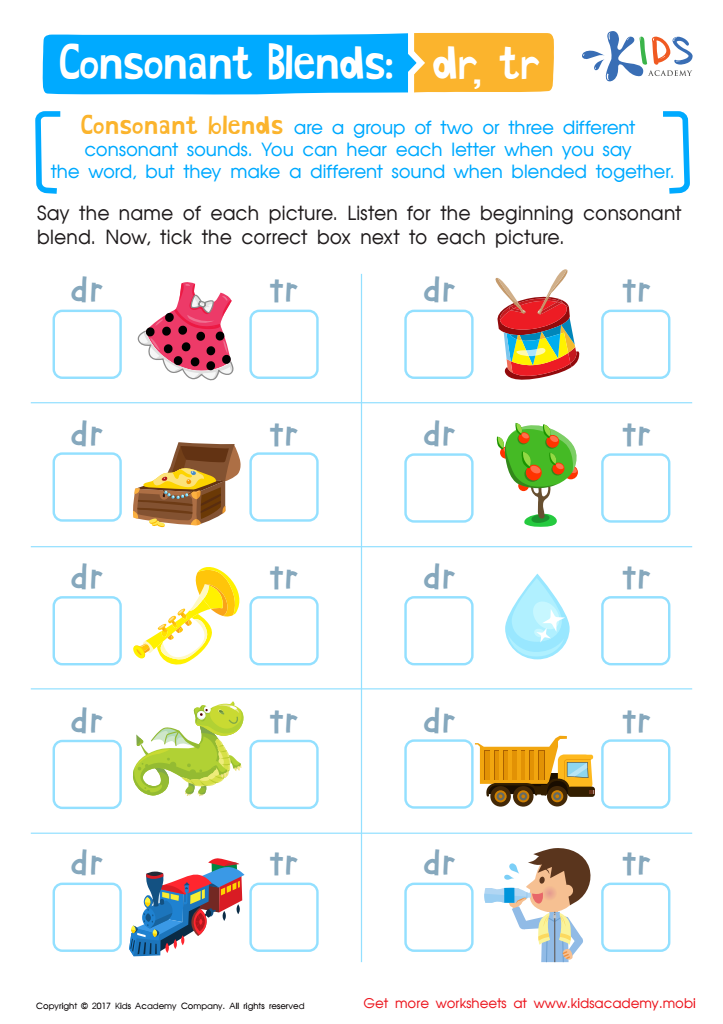

Consonant Blends: "Dr" and "Tr" Printable
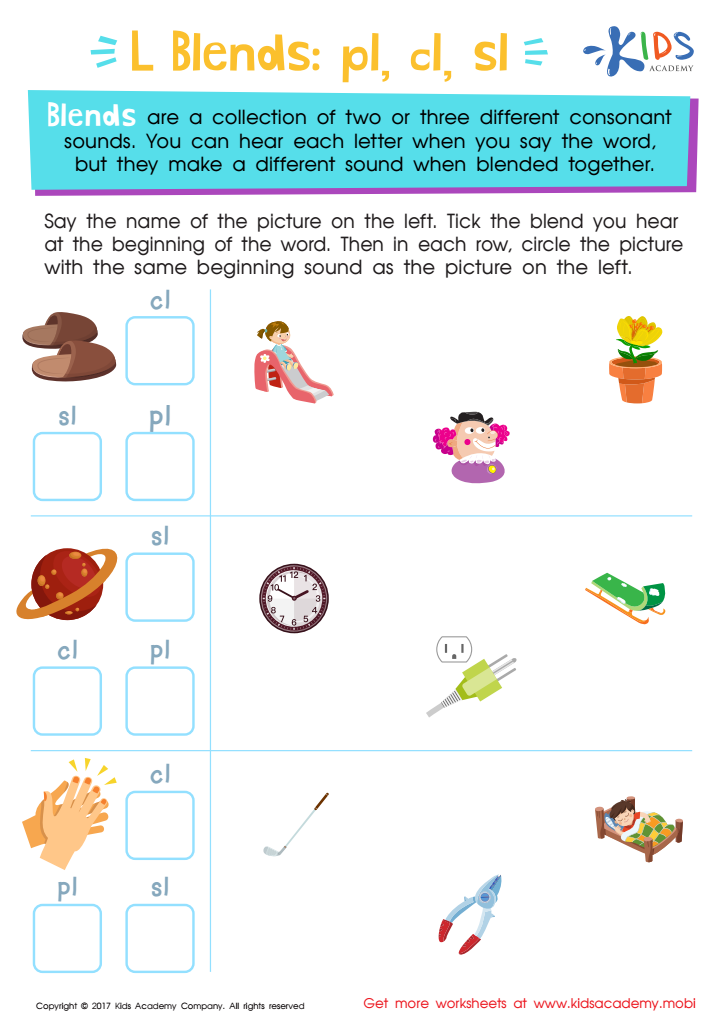

L Blends: "Pl", "Cl" and "Sl" Printable
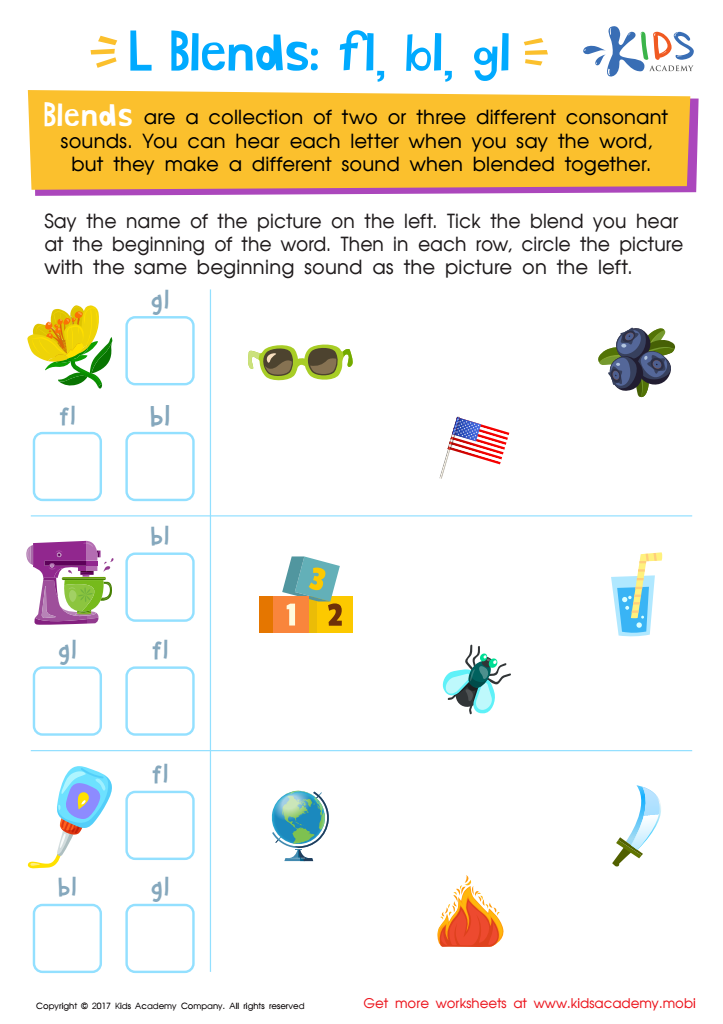

Blending Consonants: "Fl", "Bl" and "Gl" Printable
Parents and teachers play a vital role in fostering literacy skills in children, and understanding normal consonant blends is essential for ages 6-8. Consonant blends, such as "bl," "tr," and "st," consist of two or more consonants where each sound is heard, and mastering them is a crucial step in phonemic awareness—the ability to hear, identify, and manipulate sounds in words. This foundational skill aids in decoding words more accurately, leading to improved reading fluency.
At ages 6-8, children are transitioning from phonics recognition to fluent reading. Successfully recognizing and pronouncing consonant blends empowers children to 'blend' sounds confidently, making reading a more seamless and enjoyable activity. This fluency boosts their ability to comprehend text, fostering overall academic success and a lifelong love of learning.
Moreover, proficiency in consonant blends aids in spelling accuracy. For example, knowing the blend "dr" helps children spell and recognize words like "drum" and "drop." Engaging children in playful and instructional activities focused on these blends enhances their language skills across reading, writing, and speaking. Ultimately, parents and teachers investing time in teaching consonant blends ensures children develop strong literacy foundations crucial for academic growth and everyday communication.
 Assign to My Students
Assign to My Students





